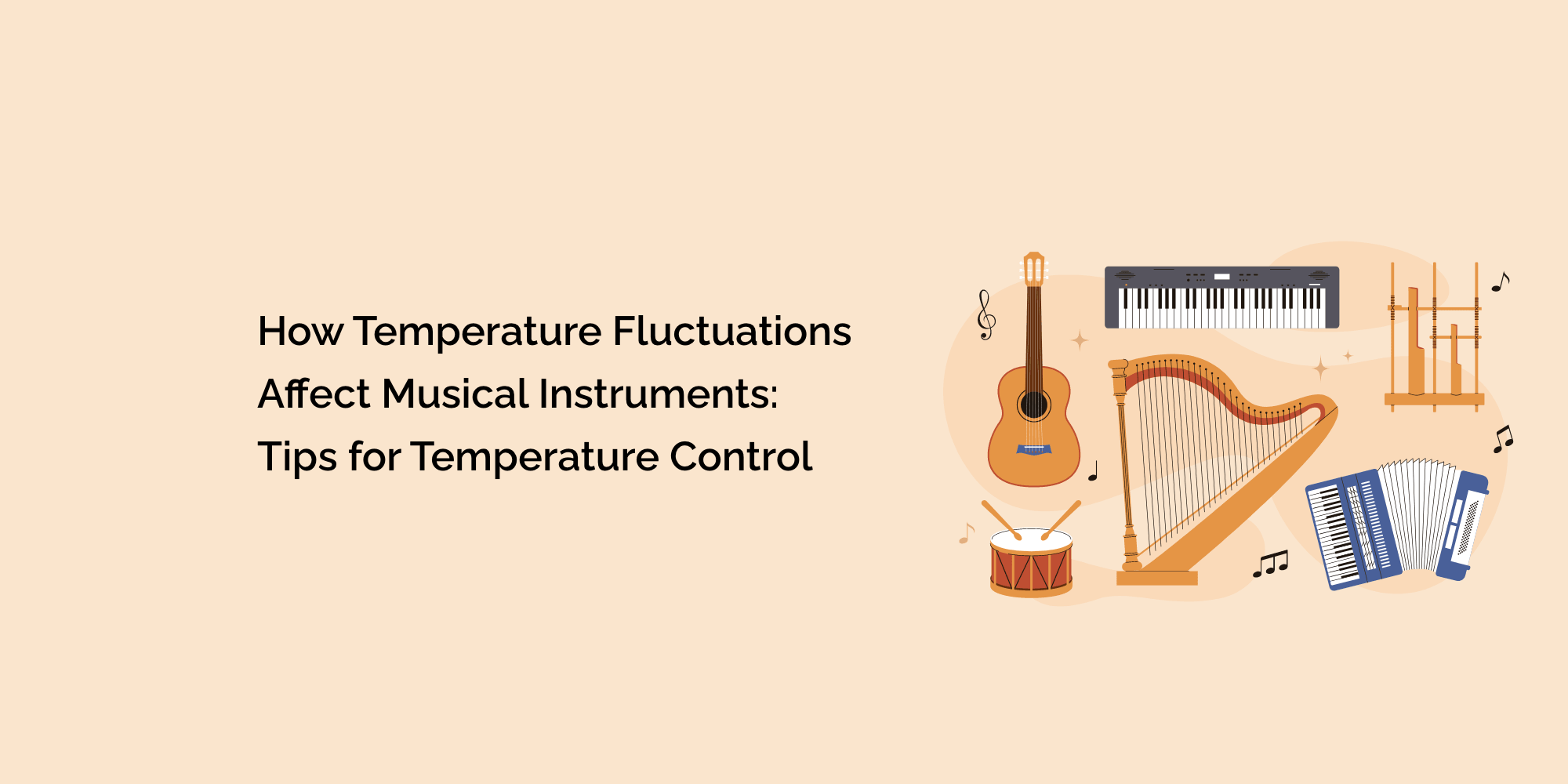Temperature fluctuations can significantly impact musical instruments, affecting their structure, tonal quality, and overall performance. Understanding the effects of temperature on tools is essential for musicians and instrument caretakers to ensure their instruments' longevity and optimal condition. In this comprehensive blog, we will explore how temperature fluctuations affect different types of musical instruments, discuss the risks associated with temperature variations, and provide practical tips for temperature control. By implementing effective temperature control measures, musicians can protect their valuable instruments and preserve their sound for years.
The Relationship Between Temperature and Musical Instruments
Temperature fluctuations can affect musical instruments differently based on their construction, materials, and design. Understanding the specific vulnerabilities of instrument categories, such as woodwinds, strings, brass, and pianos, helps implement effective temperature control measures. Additionally, humidity levels, in conjunction with temperature, play a significant role in instrument health.
Understanding the Risks of Temperature Fluctuations
Temperature fluctuations pose risks to musical instruments. Structural damage, such as warping, cracks, or joint failures, can occur due to the expansion and contraction of instrument materials. Tonal changes and performance degradation are also expected consequences of temperature instability.
Ideal Temperature Ranges for Instrument Storage and Use
Maintaining the proper temperature range is crucial for instrument storage and use. General guidelines suggest a stable temperature between 18°C and 24°C (64°F to 75°F). However, specific instrument types may have unique temperature requirements. It is essential to consider these recommendations for optimal conditions.
Tips for Temperature Control in Instrument Storage Spaces
Effective temperature control in instrument storage spaces involves insulation and climate control solutions. Proper insulation prevents temperature fluctuations caused by external factors, while climate control systems, such as HVAC systems or dehumidifiers, help regulate temperature and humidity levels.
Tips for Temperature Control During Instrument Transport
Transporting instruments in extreme temperatures requires precautions to minimize the impact on their condition. Proper instrument packaging, such as complex cases and protective covers, provides insulation and shielding. Avoiding prolonged exposure to extreme temperatures and rapid temperature changes is crucial.
Monitoring Temperature with the Right Tools
Choosing the proper temperature monitoring tools is essential for accurate readings. Traditional thermometers and hygrometers provide primary temperature and humidity measurements. Digital temperature sensors and data loggers offer more precise lessons and data logging capabilities. Wireless monitoring systems provide real-time tracking and remote access to temperature data.
Creating a Stable Environment for Performance Spaces
Temperature control in performance spaces, such as concert halls and studios, is crucial to ensure optimal instrument conditions. Proper HVAC systems, insulation, and acoustical design help maintain stable temperature levels. Acclimatization of instruments before performances is also essential to minimize the impact of temperature changes.
Collaborating with Temperature Experts and Instrument Technicians
Seeking advice from temperature experts and instrument technicians provides valuable insights into temperature control. Temperature experts can guide climate control systems, insulation, and monitoring tools. Instrument technicians can advise on instrument repair and restoration related to temperature-related issues.
Educating Musicians on Temperature Control
Raising awareness about temperature control among musicians is crucial. By understanding the risks of temperature fluctuations and the importance of temperature monitoring, musicians can actively participate in preserving their instruments' health. Providing resources, workshops, and educational materials helps musicians enhance their knowledge and awareness.
The Benefits of Temperature Control for Musical Instruments
Implementing effective temperature control measures brings numerous benefits to musical instruments. It preserves the instruments' value, as well as their structural integrity and longevity. Maintaining stable temperature conditions ensures optimal sound quality, tonal characteristics, and performance consistency.
Certainly! Here are some frequently asked questions (FAQs) about temperature fluctuations and their impact on musical instruments:
How do temperature fluctuations affect musical instruments?
Temperature fluctuations can have various effects on musical instruments. They can cause structural damage such as warping, cracks, or joint failures due to the expansion and contraction of instrument materials. Temperature changes can also lead to tonal changes, affecting the instrument's sound quality and performance.
Which types of musical instruments are most vulnerable to temperature fluctuations?
Different types of instruments may have varying vulnerabilities to temperature fluctuations. For example, woodwind instruments, such as clarinets or flutes, may be more susceptible to changes in temperature and humidity, which can impact the tone and responsiveness. Similarly, acoustic string instruments like guitars or violins can be affected by temperature changes, leading to issues like neck bowing or changes in string tension.
Conclusion
Temperature fluctuations can significantly impact musical instruments, affecting their structure, tonal quality, and overall performance. By understanding the risks associated with temperature variations and implementing effective temperature control measures, musicians can protect their valuable instruments and ensure longevity. Temperature control plays a vital role in instrument care, from proper storage and transport practices to creating stable performance environments. Collaborating with temperature experts and instrument technicians, educating musicians about temperature awareness, and utilizing the right temperature monitoring tools further enhance instrument health and performance. By prioritizing temperature control, musicians can enjoy their instruments' optimal sound quality and performance for years.








